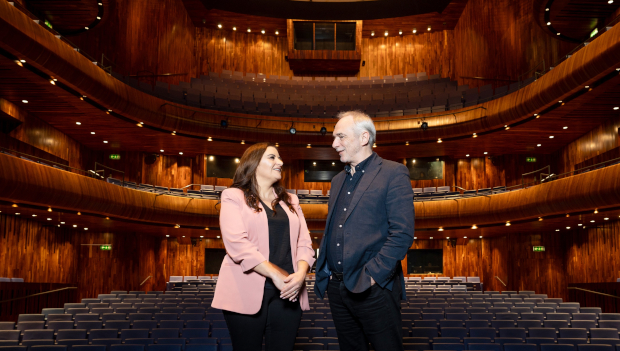
National Opera House sponsorship shows how high culture and high tech can coexist
In among all the big news this month, I found myself pleasantly diverted by the story on this website concerning Datapac and the National Opera House.
It’s not often that the words ‘opera’ and ‘cyber security’ are found in such close proximity and I suppose that’s something for which we should be grateful. After all, I don’t know about you but that is definitely not something I could see myself sitting through. I mean, there’s ‘modern opera’ and then there’s ‘very modern opera’.
Anyway, the four-year agreement, valued at €175,000, is something to be celebrated, even by those of us who rarely, if ever, go to the opera. It’s heartening to see a connection between technology and culture especially as, all too often, they can be perceived as being in very different camps from each other.
This isn’t too surprising, I suppose. Opera is a decidedly analogue medium and the opportunities for digital transformation are not likely to be very pronounced.
But then, we’re not really talking about opera here, we’re talking about technology. And that’s not really connected to the thing that people go to the opera for, the performance.
As the story states, this deal “advances the National Opera House’s technology strategy to boost collaboration, communication, cyber security, and connectivity for the venue”. All very useful, but all secondary to the raison d’etre of the opera house.
Still, I think that’s a good thing. Technology is helping to lighten the burden associated with the non-artistic aspects of putting on performances at the opera house and then, in turn, it’s alleviating the worries that come with using technology to handle the normal day-to-day running of the business in the first place.
I must admit that I particularly liked this sentence in the story: “In turn, Datapac’s solution will empower employees to continue to deliver a top-tier variety of performances for patrons across opera, theatre, dance, and music.”
I found myself asking what it was, exactly, the solution was empowering them to do and then I realised that ’employees’ in this context was unlikely to be the same as ‘performers’ because it wouldn’t make much sense. It also reinforces the point that technology is enabling the running of the business rather than the performance itself.
I like to keep a clear demarcation between technology as an enabling platform for the business and the experience up to the point where the performers begin their performance. That’s where the border between digital and the analogue should be.
Sometimes, it appears there are some in the technocracy who have a natural tendency to over-reach, to believe that if they see or hear something they like, they should be able to duplicate it through technology. But they’re the kind of people who fail to understand the very value of the artistic endeavour that is causing the reaction they want to replicate.
How many times have you heard someone say “it’s not the same” when they’re watching a film of an event they had previously been at as part of the audience? And isn’t the problem for some of those who are eager to use technology to replicate art that they might be guilty of thinking it is the same.
There used to be a funny quip about opera that “it ain’t over til the fat lady sings” but what happens if that’s not the fat lady singing?





Subscribers 0
Fans 0
Followers 0
Followers